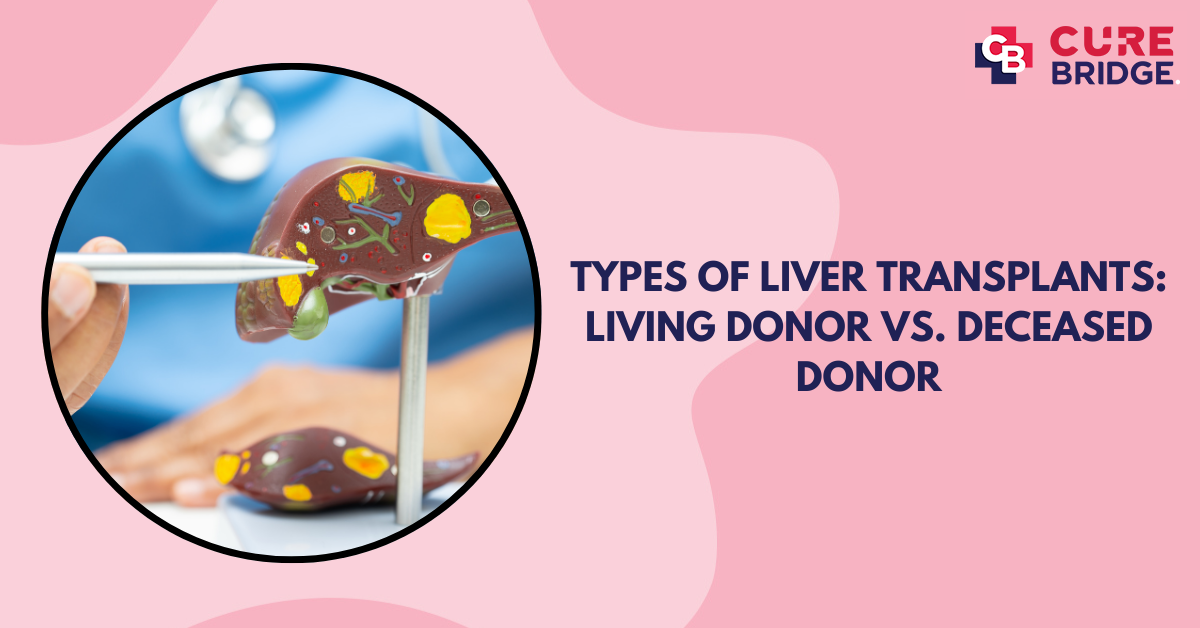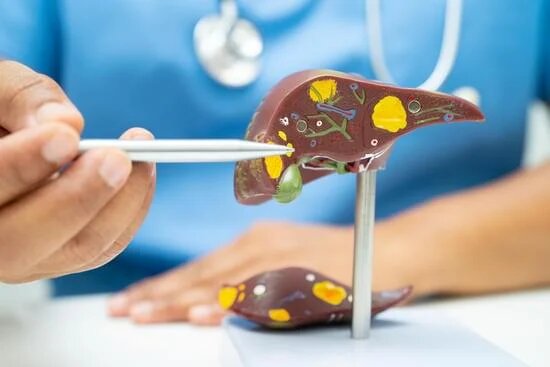
Types of Liver Transplants: Living Donor vs. Deceased Donor
The liver is nothing short of a miracle worker in the human body—an organ that not only supports countless vital functions but also has the incredible ability to regenerate. Yet, when liver disease or failure reaches a critical point, even this resilient organ may need help beyond its natural abilities. That’s where liver transplantation steps in, offering a second chance at life for those battling end-stage liver disease, liver failure, or certain cancers.
What makes liver transplants even more remarkable is the option of using either a living donor or a deceased donor. These two approaches open doors to hope for patients and their families, each with its unique path and challenges. In this blog, we’ll uncover the processes, pros, cons, and key factors to consider when choosing this life-altering procedure.
Understanding Liver Transplantation
At its core, liver transplantation is the replacement of a failing liver with a healthy one—either a whole organ or a part of it, depending on the situation. This surgery is typically recommended for individuals facing severe liver conditions, such as:
- Cirrhosis: A chronic condition often caused by hepatitis infections, long-term alcohol use, or fatty liver disease, which progressively damages the liver’s structure and function.
- Acute liver failure: A sudden and dramatic loss of liver function, sometimes triggered by drug toxicity or severe infection.
- Liver cancer: In cases where the cancer remains confined to the liver and hasn’t spread to other parts of the body.
- Genetic disorders: Conditions inherited at birth, like Wilson’s disease or hemochromatosis, that disrupt liver function over time.
However, the challenge of liver transplantation extends beyond the surgery itself. The demand for donor livers far outweighs the supply, leaving many patients on long waiting lists. For this reason, the type of donor—whether living or deceased—becomes a critical factor in determining the options available to patients. This dynamic underscores the importance of collaboration, awareness, and innovation in addressing the pressing need for organ donation.

Living Donor Liver Transplant
In a living donor liver transplant, a healthy individual donates a portion of their liver to someone in need. This selfless act often involves close family members or relatives, though unrelated donors can also participate if they meet the compatibility requirements.
The Process
Before surgery, the donor undergoes thorough medical and psychological assessments. These tests confirm that the donor is in optimal health and emotionally prepared for the process. Compatibility tests, including blood type and liver size matching, are also crucial for achieving a safe and successful transplant.
Surgery
During the operation, surgeons carefully remove 30–60% of the donor’s liver based on the recipient’s specific needs. This portion is then transplanted into the recipient during a simultaneous procedure. Highly skilled teams carry out the surgeries with precision to minimize risks.
Recovery
Post-surgery, both donor and recipient are closely monitored in the hospital to manage pain, watch for complications, and promote healing. Donors typically recover and return to their regular routines within a few weeks, while recipients often experience significant improvements in health as their new liver begins to function.
Deceased Donor Liver Transplant
A deceased donor liver transplant involves obtaining a liver from a person who has recently died, usually due to a brain injury or trauma, and who has consented to organ donation. This is the most common type of liver transplant.
Process
- Waiting List: In India, liver allocation and transplantation are managed by government-authorized organizations and networks, such as NOTTO (National Organ and Tissue Transplant Organization) at the national level, SOTTO (State Organ and Tissue Transplant Organization), and ROTTO (Regional Organ and Tissue Transplant Organization).
- Matching: Once a liver becomes available, it is matched to the most suitable recipient based on factors like blood type, body size, and the severity of liver disease (MELD score).
- Transplant Surgery: The deceased donor’s liver is retrieved and transplanted into the recipient.
-

Liver Transplant
Success Rates and Long-Term Outlook
Both types of liver transplants have high success rates. However, outcomes depend on factors like the recipient’s overall health, the quality of the transplanted organ, and adherence to post-operative care.
- Living Donor Transplant: Often results in quicker recovery times and lower rejection rates due to shorter preservation periods.
- Deceased Donor Transplant: Success rates are comparable, but complications may arise if the organ has been preserved for extended periods.
Recipients of either type of transplant must take lifelong immunosuppressant medications to prevent organ rejection. Also, regular follow-ups with a hepatologist are important for monitoring liver function and overall health.
Why Choose Cure Bridge for Liver Transplant Surgery?
At Cure Bridge, we understand that undergoing a liver transplant is a life-changing decision. Our mission is to provide a seamless and supportive experience, so you can focus solely on your health and recovery.
Comprehensive Care Coordination
Navigating the complexities of medical treatments can be challenging. Cure Bridge simplifies this process by offering:
- Dedicated Relationship Manager: A single point of contact who assists you throughout your treatment journey.
- Integrated Insurance Approval: We reduce administrative burdens by streamlining insurance documents and approvals.
- Seamless Travel and Accommodation: We assist you with travel arrangements and hotel bookings, so you have a comfortable stay during your treatment period.
Expert Medical Partnerships
Cure Bridge collaborates with leading multi-speciality hospitals and renowned liver transplant specialists to provide:
- Access to Qualified Doctors: Receive care from experienced professionals who are experts in liver transplantation.
- Advanced Medical Facilities: Benefit from state-of-the-art medical technologies and facilities that adhere to international standards.
By choosing Cure Bridge for your liver transplant surgery, you are opting for a partner committed to making your medical journey as smooth and stress-free as possible.

Final Words
Liver transplantation offers a new lease on life for patients with severe liver conditions. Whether opting for a living donor liver transplant or a deceased donor liver transplant, both have unique benefits and challenges. The decision often depends on the urgency of the condition, availability of a suitable donor, and personal and medical considerations.
At CureBridge, we are dedicated to supporting you at every step of your liver transplant journey. Contact us today and take the first step toward a healthier future!
